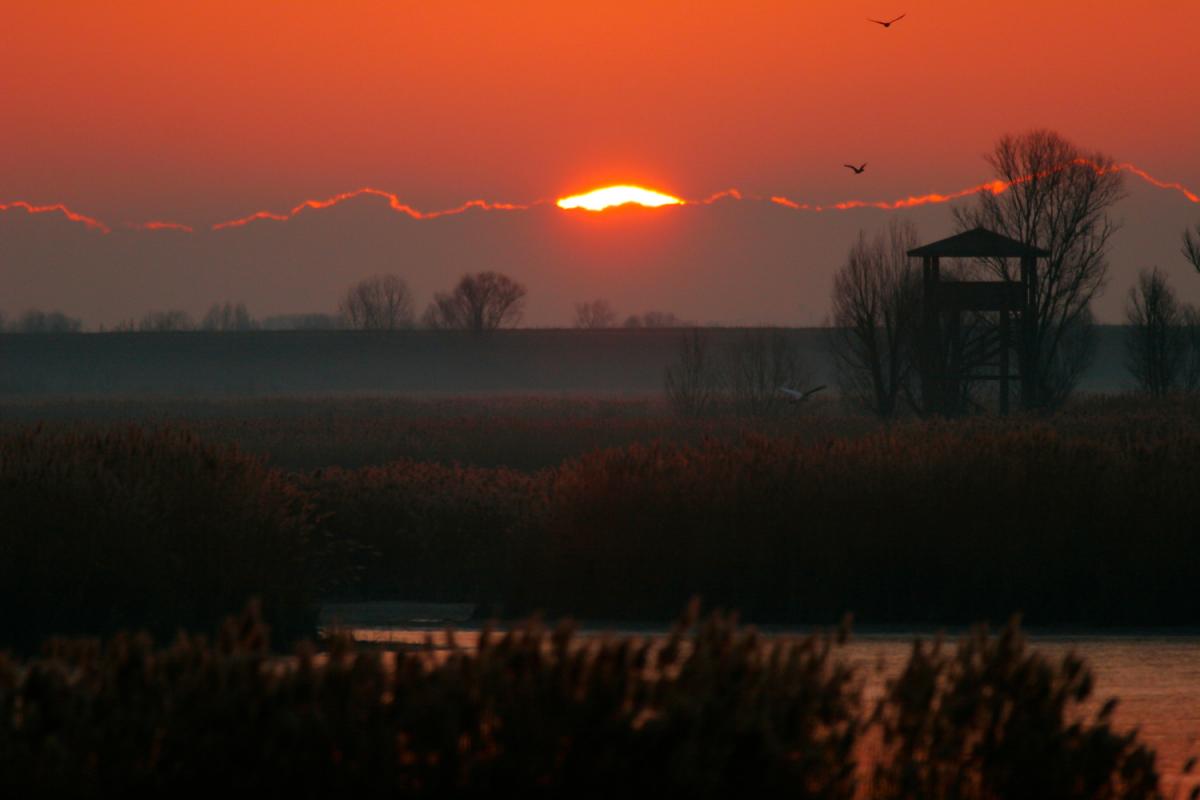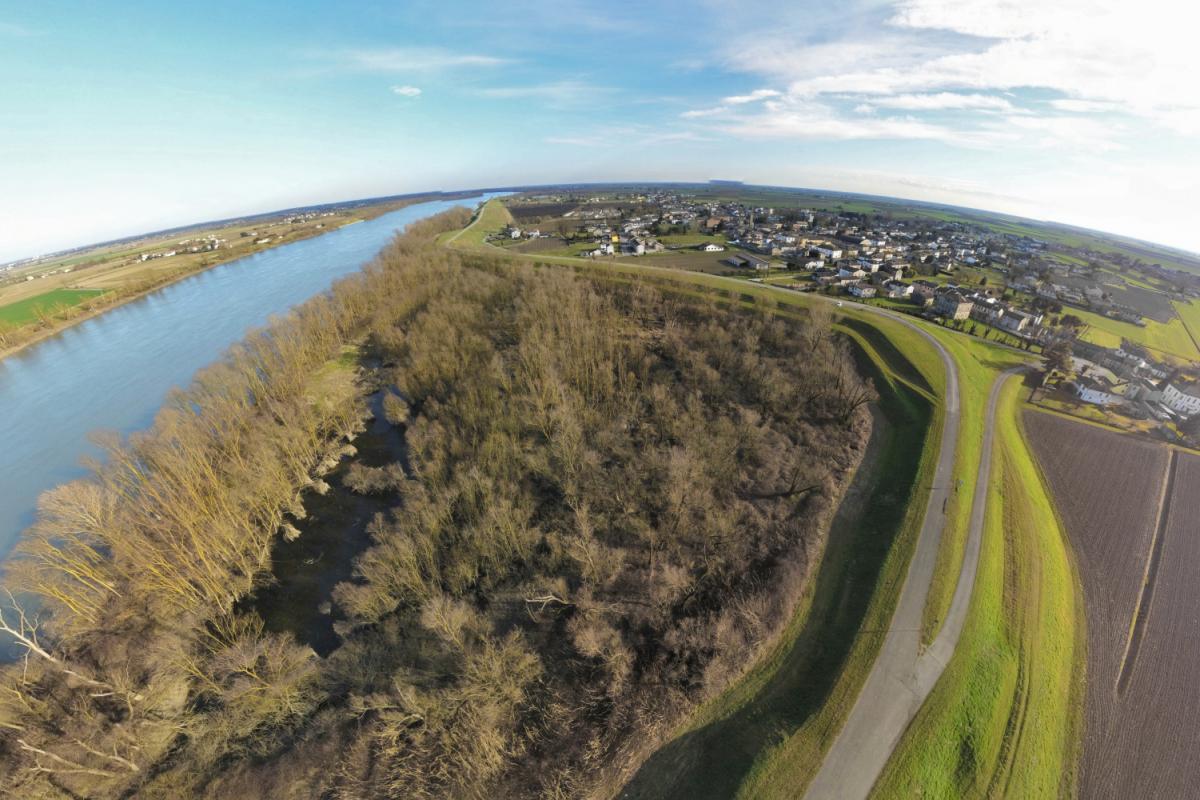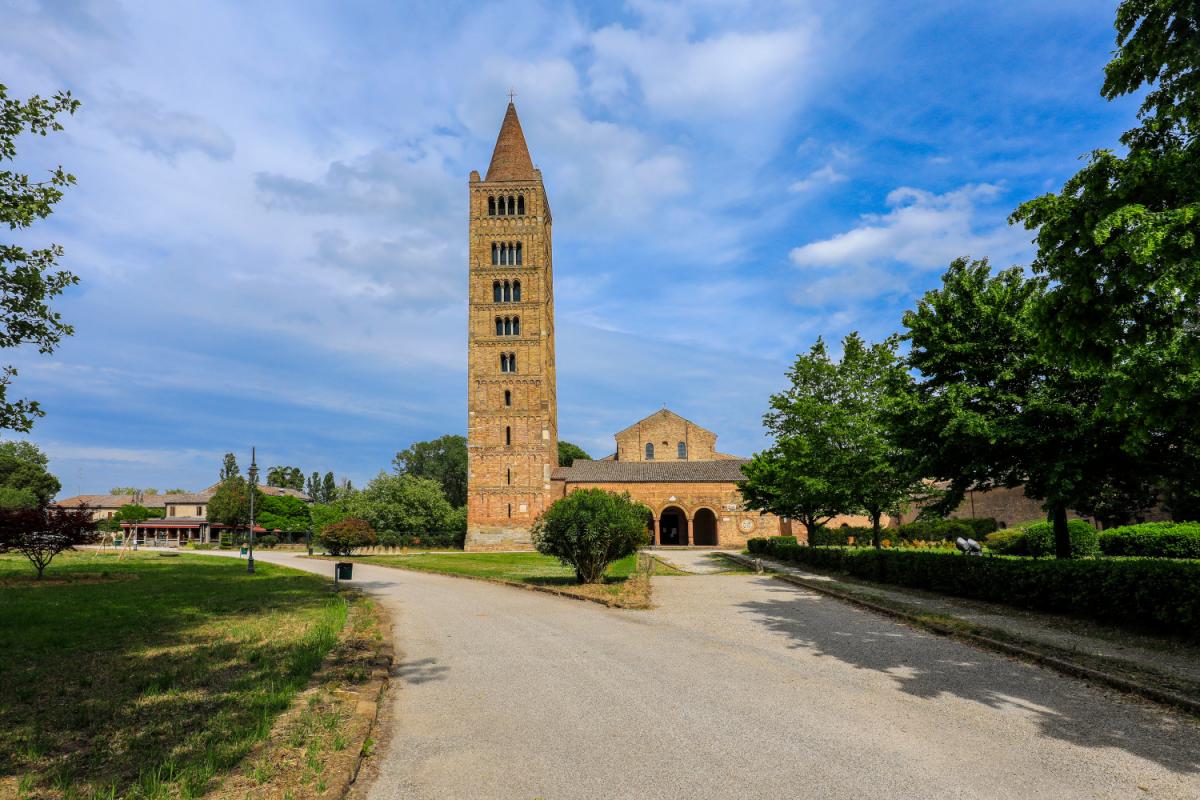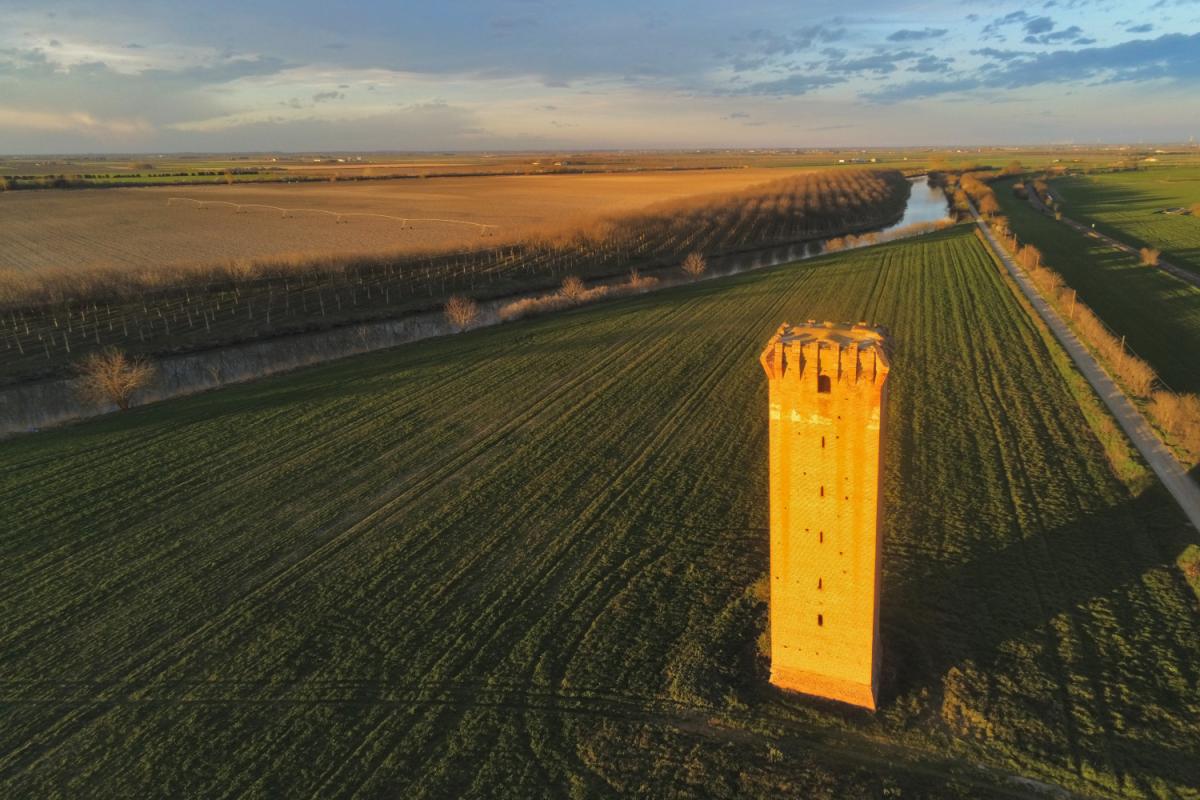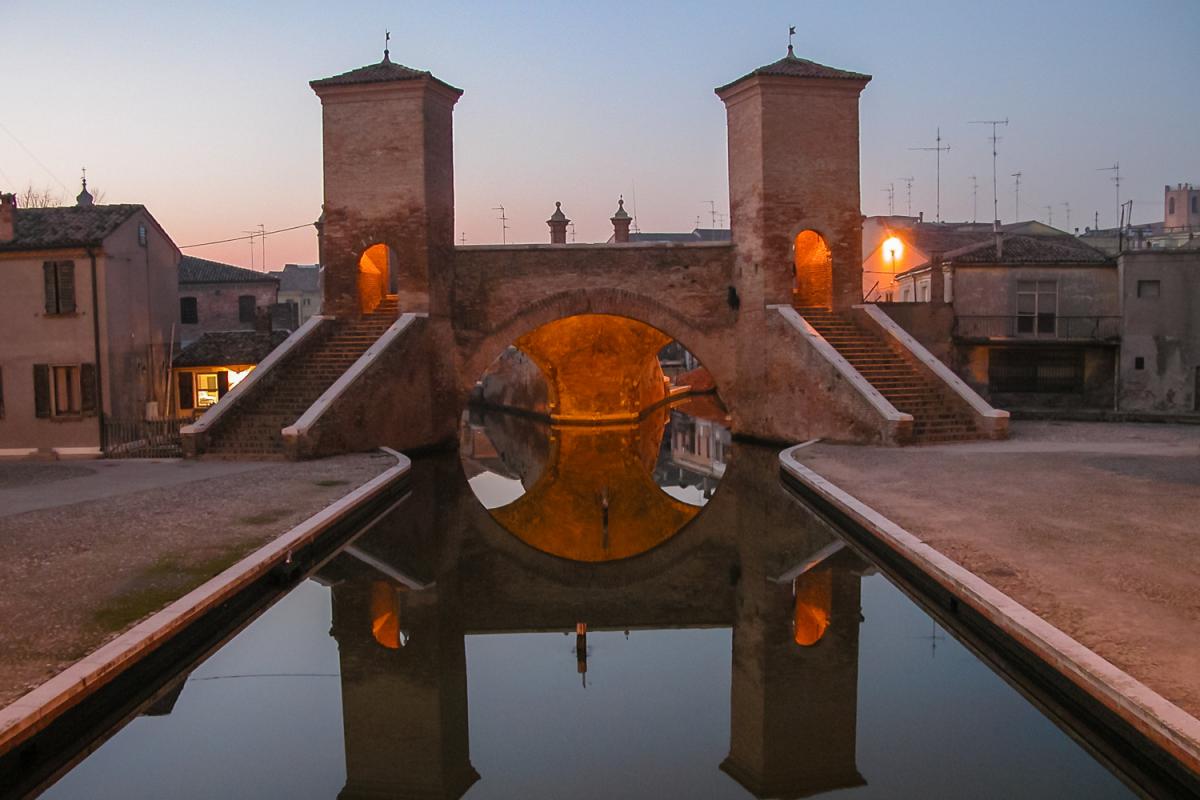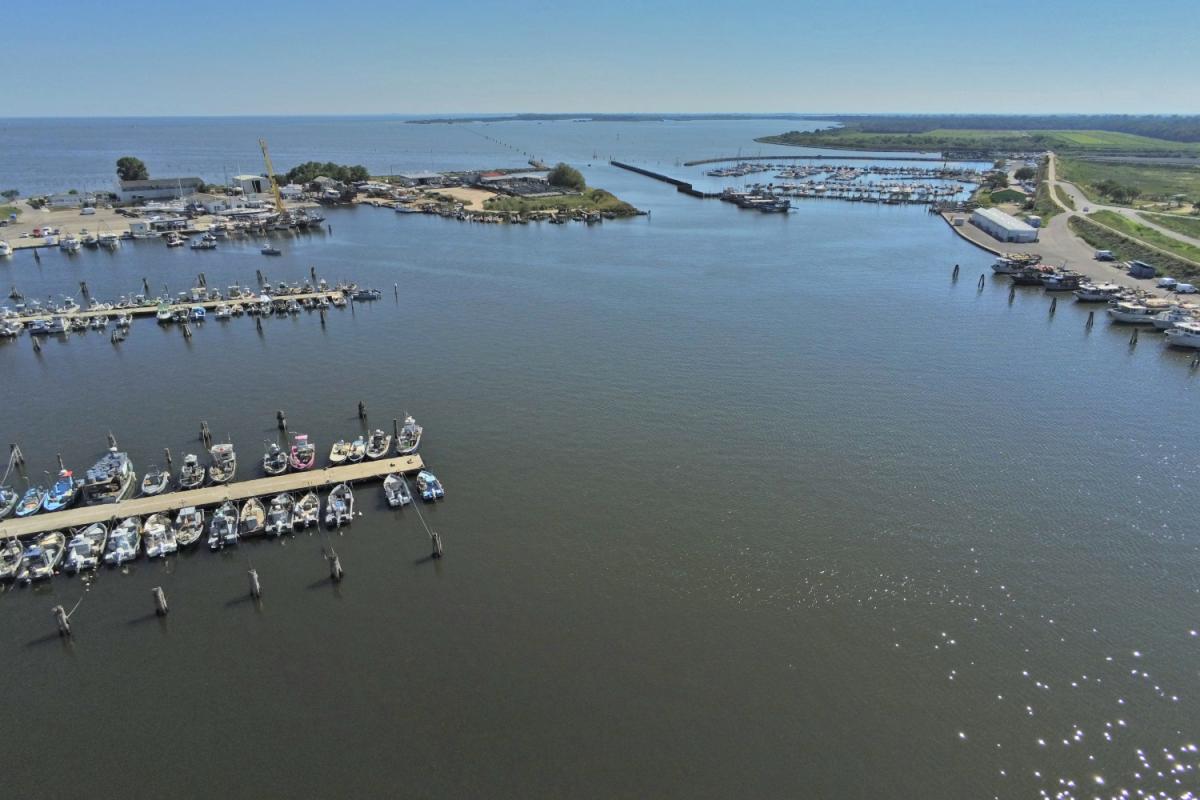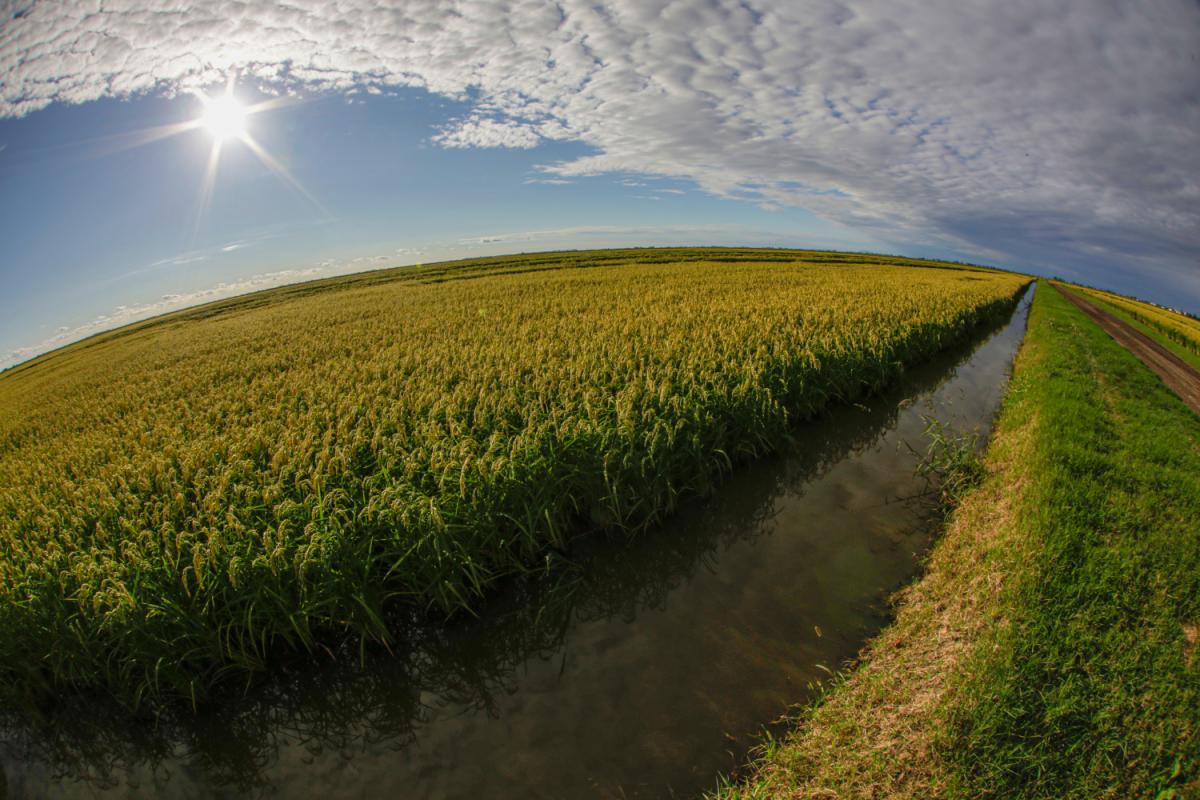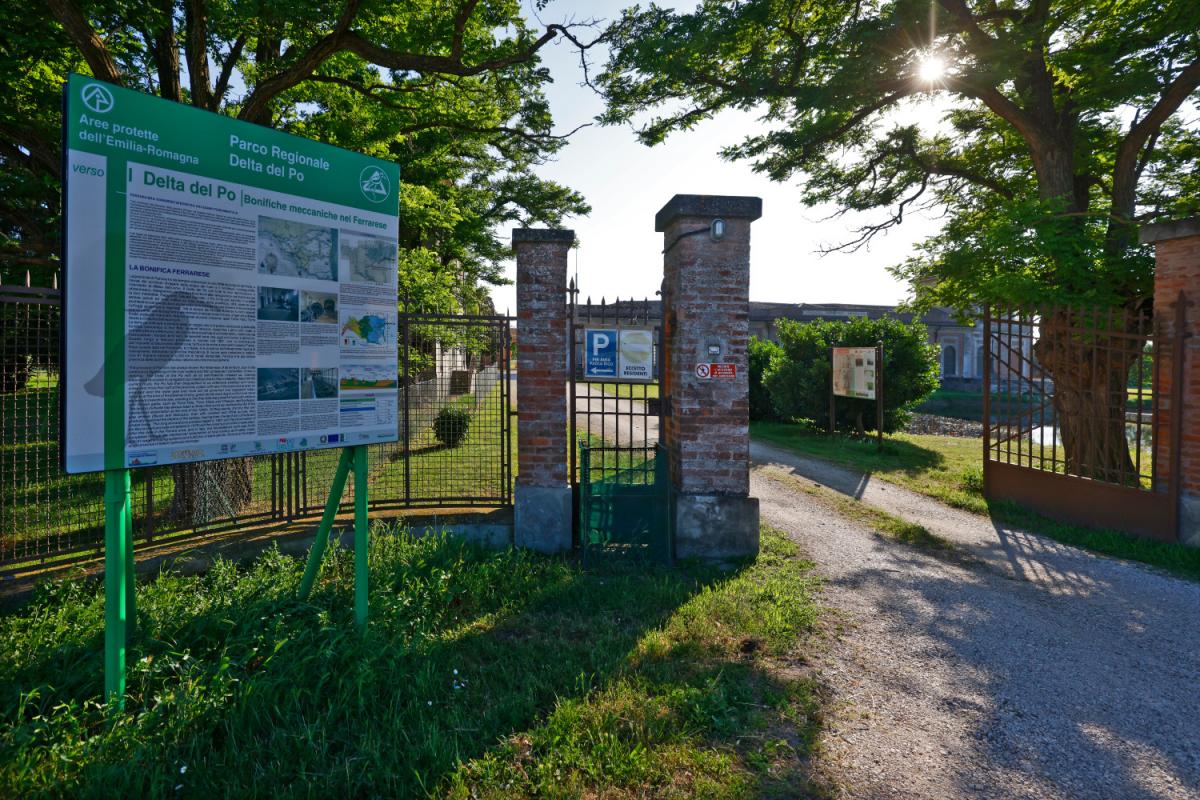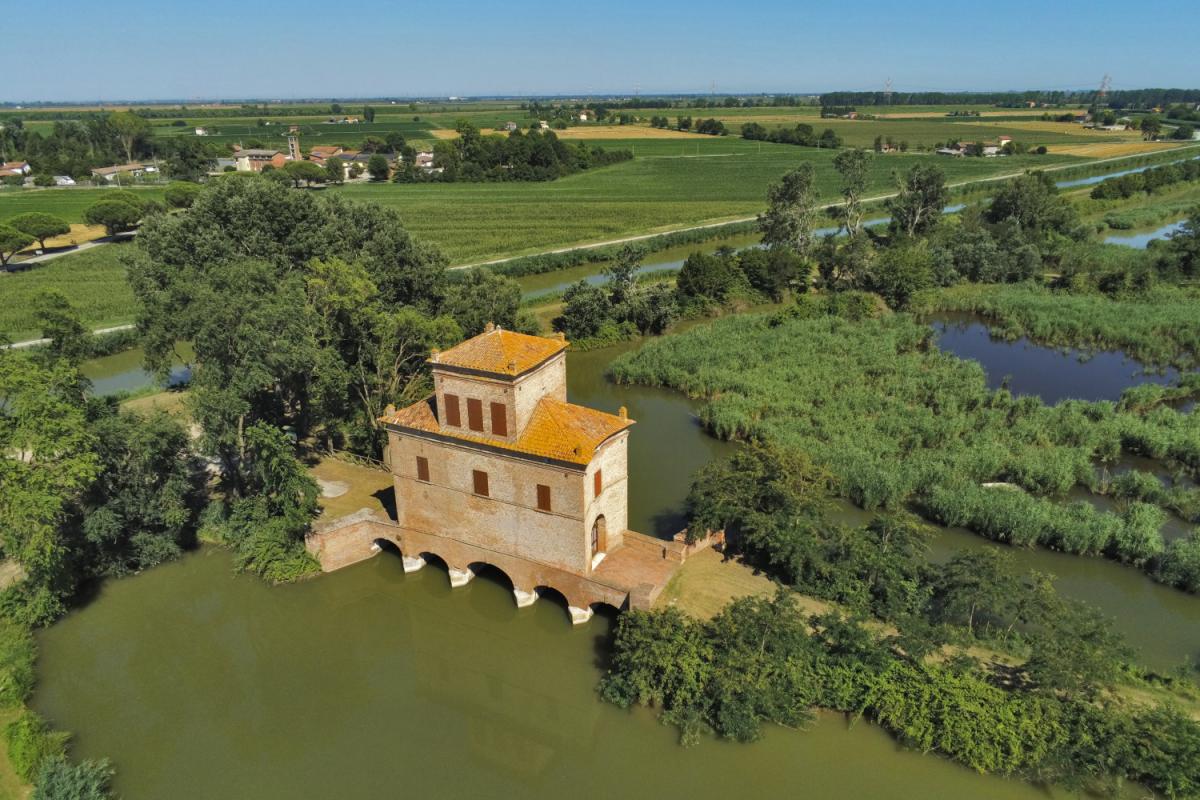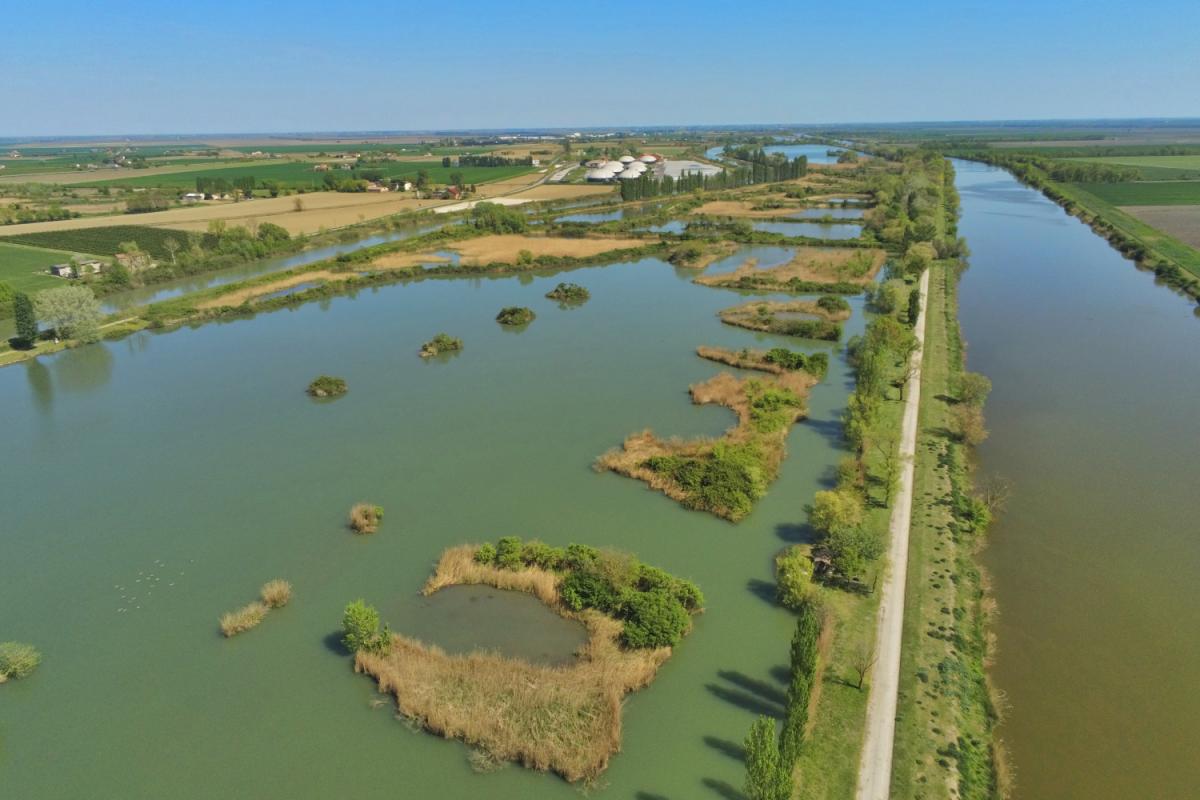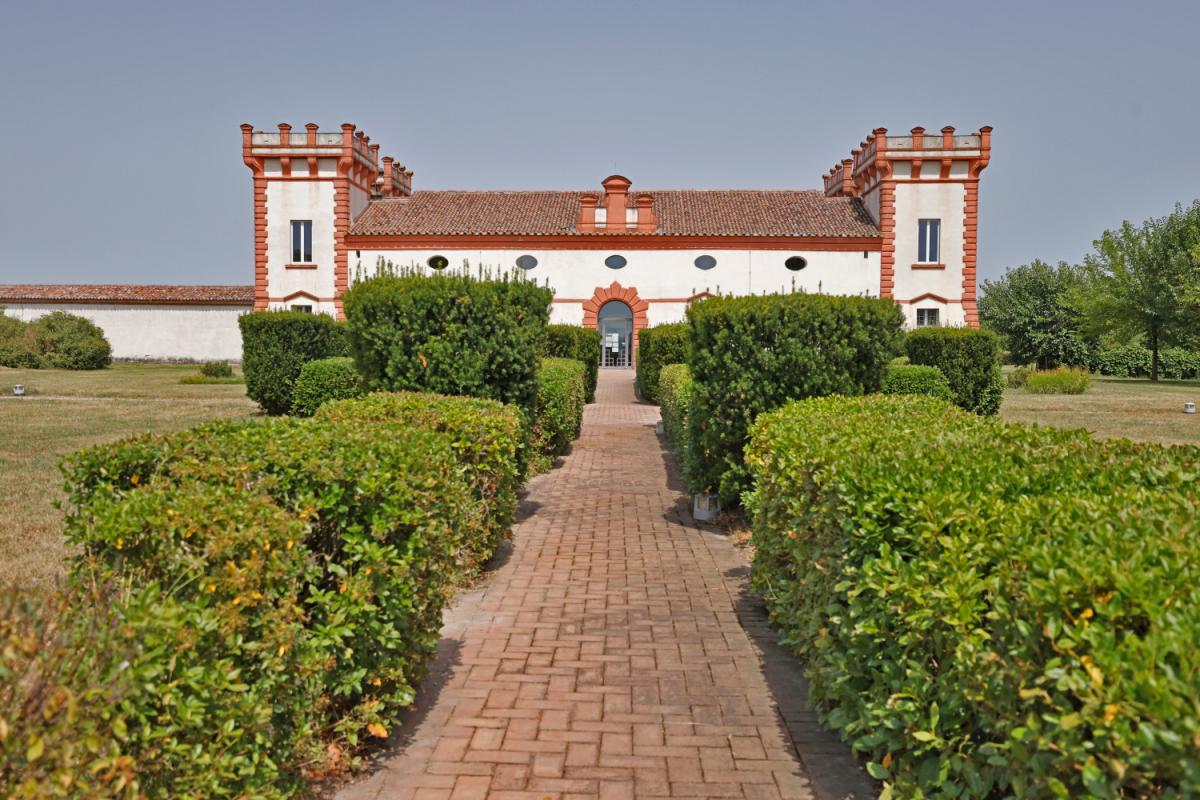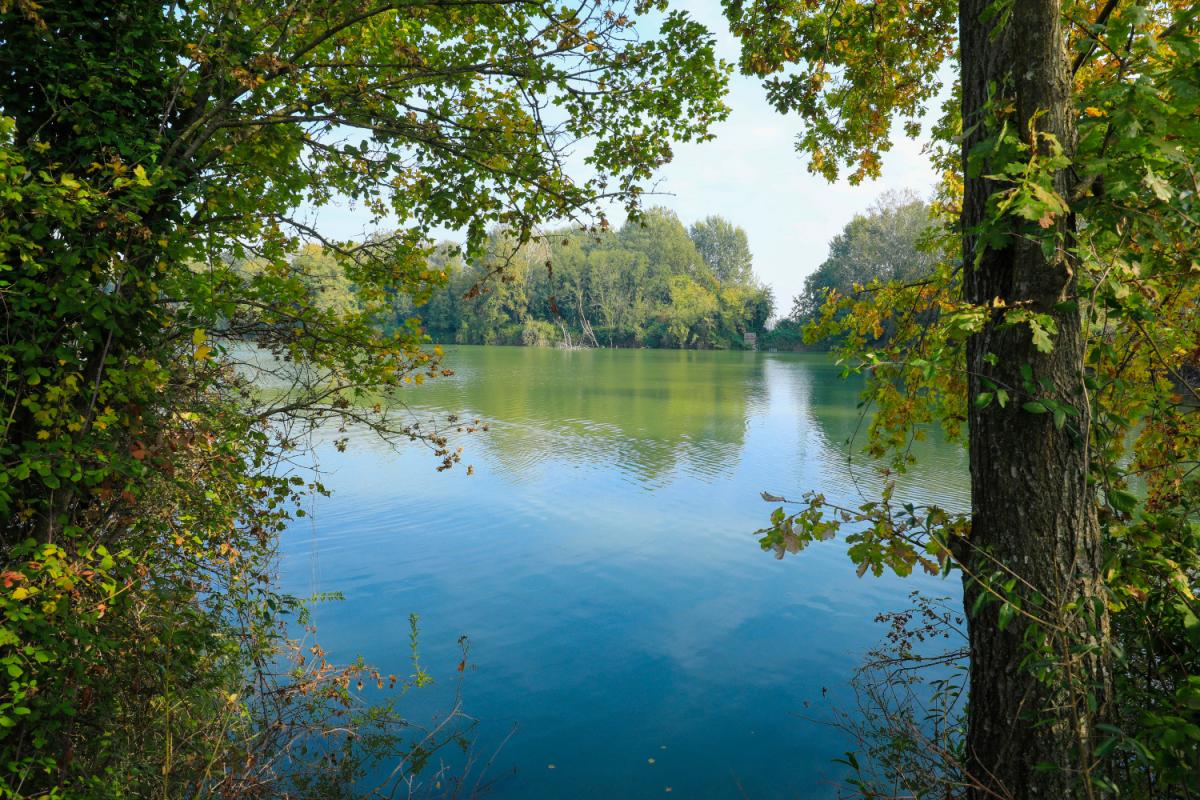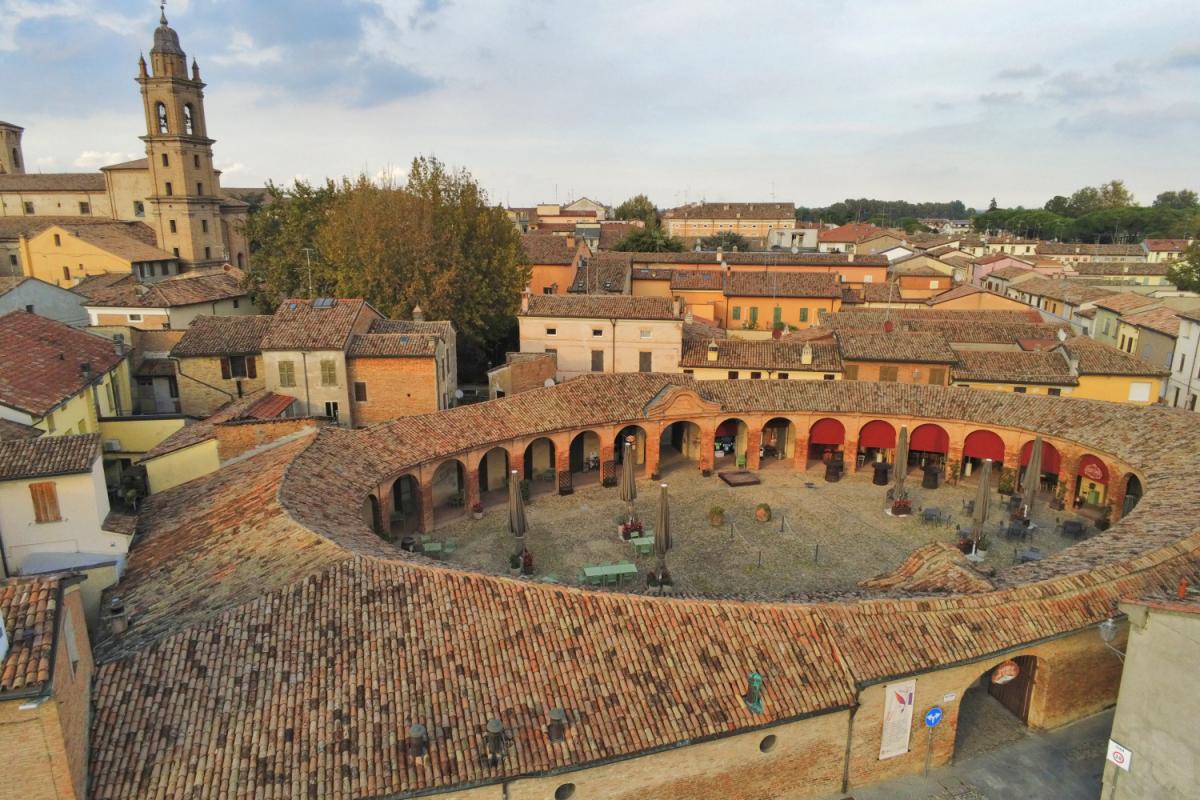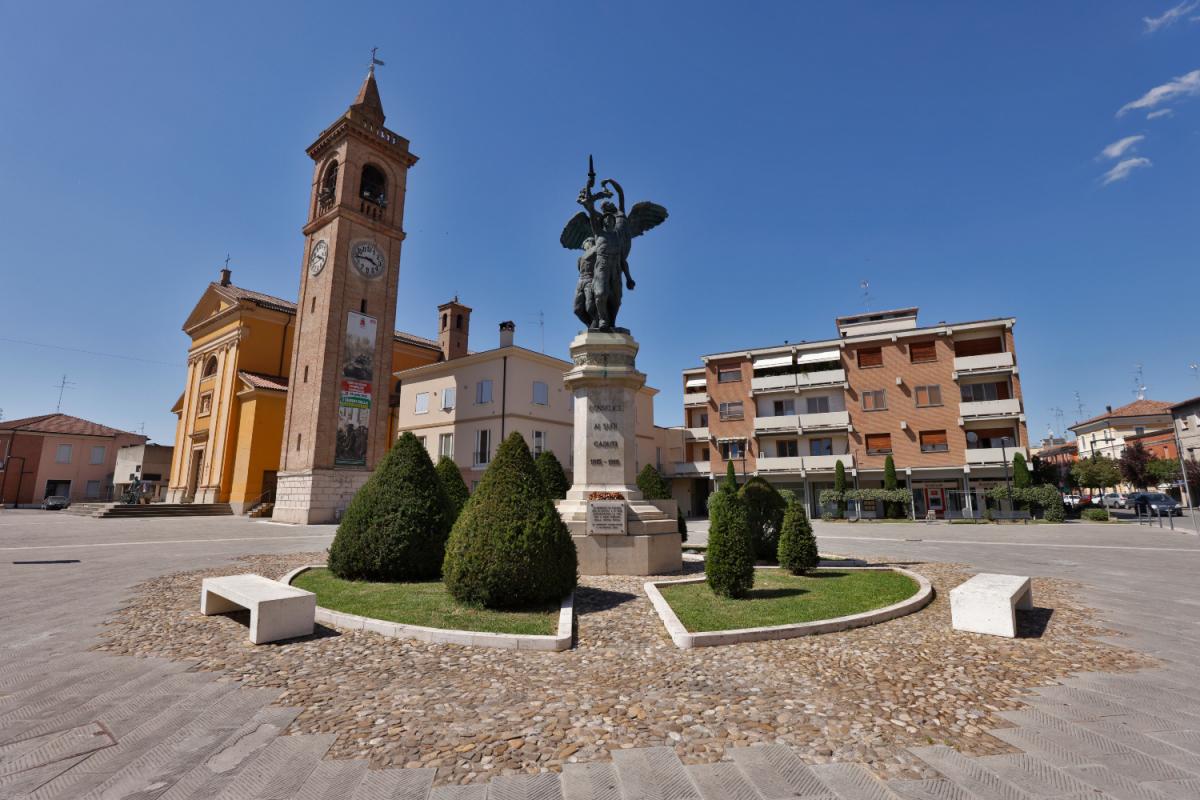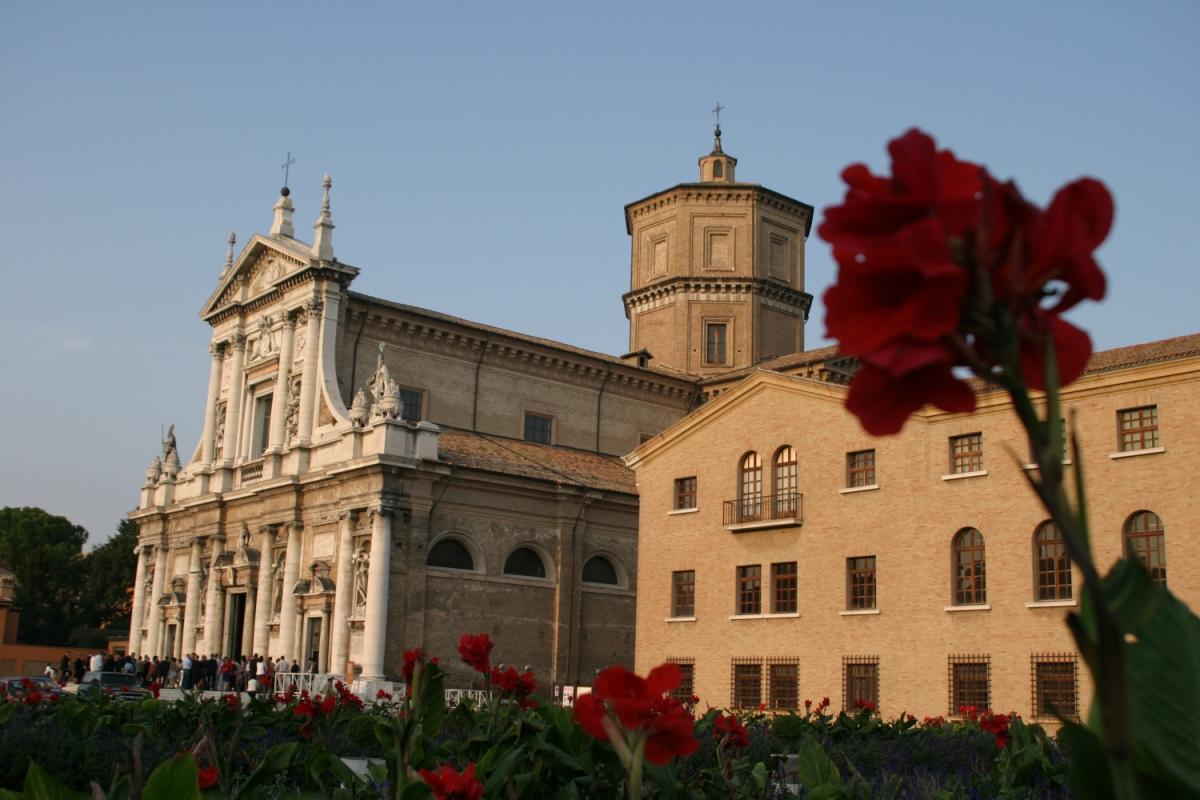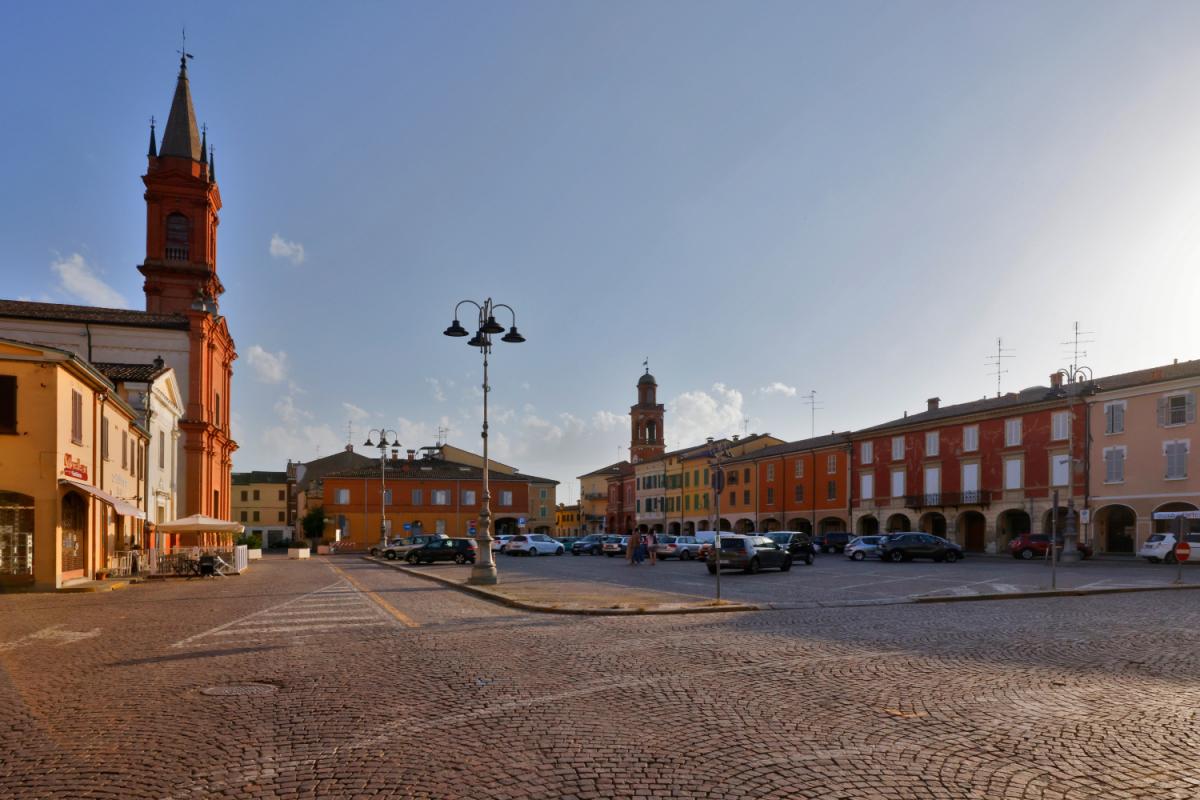PLACES OF PO DELTA
The website has been built for the Leader area of the Emilia-Romagna Delta located between the municipalities of Goro and Cervia, funded by the 2014-2020 Emilia-Romagna Region Rural Development Programme 2014-2020 Measure 19.2.02.14B entitled “Implementation of slow promotional and commercial actions intended for the Po Delta area”.
ARGENTA
The town, probably of Roman origin, is now one of the largest municipalities in the province of Ferrara and has a modern appearance, the result of reconstructions carried out in the years following the Second World War. Just outside the town centre stands the charming Pieve di San Giorgio, the oldest in the Ferrara area (dating back to the 6th century) with an admirable marble portal dating back to 1122 depicting the months of the year and work in the fields.
From a naturalistic point of view, the Argenta area is one of the most interesting in the province, thanks to the presence of one of the few ecomuseums set up in Italy as well as the neighbouring Valleys - a paradise for water birds and an important naturalistic destination. It is also crossed by the “Wine and Flavour Route”.
RIVA DEL PO
Riva del Po was founded in 2019 thanks to the merging of the municipalities of Berra and Ro. The village of Berra rises on the banks of the river Po bordering with the Veneto region. Since it is located on the territories that were once the scene of numerous diversions of the Po River over the centuries, it is rather difficult to reconstruct the history of the evolution of the village, although it is possible to assume the presence of human activities towards the end of the Roman Empire.
The town centre of Ro Ferrarese has ancient origins, and following the devolution of Ferrara, when the provincial government was transferred to the Holy See, for a certain period the then municipality played an important role as a border area to the north.
CODIGORO
Codigoro is an important agricultural town in the Ferrara lowlands and its historical evolution is closely-linked to the centuries-long history of land reclamation.
Caput Gauri, from which its current name derives, was the name given to the town in medieval times, since it stood at the point where the tributary of the river Po di Goro joined the tributary of the river Po di Volano. Along the Riviera Cavallotti, which offers a wonderful view of the river, you reach the Palazzo del Vescovo, built in the 11th century and restored in the 18th century in Venetian style. In the Codigoro area, there is also the splendid Pomposa Abbey. The resort is also on the “Wine and Flavour Route - the Great River Route”.
FISCAGLIA
Established by the merging of the municipalities of Massa Fiscaglia, Migliarino and Migliaro, this town lies along the river Volano, an offshoot of the river Po that has now been reduced to a drainage canal, but which in the early Middle Ages was its main branch of the Po delta.
The area is completely flat (maximum altitude of 3 metres) and partly below sea level and was originally characterised by a succession of valleys (lake basins, sometimes brackish in nature) and delta swamps, separated by hillocks, with a precarious hydrographic balance. The origins of the place name suggest that it is the result of a confiscation in the 6th century by the Exarchate of Ravenna, then organised as a 'castrum' for defensive purposes.
COMACCHIO
Comacchio, "little Venice", is an enchanting lagoon town: it is friendly and genuine, endowed with a vitality that thrives on respect for its history and the surrounding environment. Widespread clarity recalls the proximity of the sea, whose light floods the urban spaces, enhanced by the quiet surfaces of the canals. Comacchio, today considered the capital of the Po Delta Park, is a small town that was born and lives between land and water and is a treasure trove of natural beauty and historical heritage.
Its seven Lidos are the ideal destination for a holiday to spend with family or friends, or even for a relaxing weekend, to rest in the sun or to party in the exciting Lido nightlife.
GORO
Goro is an important fishing port on the north-eastern border of the vast protected area of the Po Delta Regional Park. The place name Goro derives from "Gaurus", an old tributary of the river Po branching off the river Volano. The history of Goro is characterised by Man's continuous struggle against both the sea and the river. Evidence of this can be seen in the ancient hydraulic regulation structures, such as Torre Palù, Torre Abate, Balanzetta and the Agrifoglio drainage canal, as well as in the lighthouses, which show how the area is constantly changing. Numerous boats depart from here to discover the natural delta environment and sail down the river towards the sea, past islands, sandbanks and reed beds, a favourite spot for birdwatching.
JOLANDA DI SAVOIA
Jolanda di Savoia is part of the special area in the province of Ferrara called 'Terra del Riso' (Land of Rice). It overlooks the magical scenery of the Po Delta Park (UNESCO World Heritage Site), and in its fertile rice fields the typical PGI Delta rice is grown. The village was originally called "Le Venezie” (The Venices), however, the name was changed in 1911 on the occasion of the visit of Victor Emmanuel III, to honour the sovereign's new-born daughter.
The paddy fields provide the backdrop for the spectacular surrounding landscape, full of canals, paths, protected oases, flora and fauna of unique quality and quantity, while the urban layout is characterised by large open courtyards, rows of small farmhouses belonging to field hands and the unmistakable rice farm buildings.
LAGOSANTO
Of unknown origins, but probably dating back to pre-Roman times and linked to the nearby village of Spina, this town was founded as Lago and became Lagosanto around the year 1000 as it was the home of a Benedictine monk, St. Appian, who lived and died here. Until the 1920s, when the Fascist regime carried out land reclamation in the Ferrara lowlands, three-quarters of Lagosanto was surrounded by valleys (Pega, Ponti and Trebba valleys), which were inextricably linked to the life and history of Lagosanto.
Life in the village, like that of all the neighbouring towns, was influenced by the land reclamation, which transformed it into an agricultural town, profoundly changing the local area.
MESOLA
The village developed around the massive, elegant, majestic Castello Estense (Este Castle), commissioned by Alfonso II at the end of the 16th century, on the edge of what was once a vast hunting estate, now a nature reserve of the Gran Bosco della Mesola (Great Mesola Wood) where the Dune Deer is a protected species.
Nowadays, Mesola is a reference point to discover the natural environment of the Po Delta Park. Its castle is home to the Museo del Bosco e del Cervo della Mesola (Mesola Woodland and Deer Museum), where cartographic documents illustrate the evolution of the Mesola area and its most salient features, including the Gran Bosco della Mesola (Great Mesola Wood) and the Dune Deer, which live here as a protected species.
OSTELLATO
The Roman settlement, built near a river access road, is today in the heart of extensive cultivated fields. Between the nearby Ferrara waterway and the canals on the reclaimed land lies the Oasi delle Vallette di Ostellato (Ostellato Valley Oasis), ideal for birdwatching, sport fishing, cycling and other nature-related activities.
They are the only remains of the ancient valleys that once surrounded the town of Ostellato, spared by the last reclamation of the Mezzano valley. The four valley coves form a unique freshwater wetland biotope in the area, especially in terms of the quantity and variety of animals that live there. As many as 150 species of nesting and migratory waterfowl can be found in the Vallette.
PORTOMAGGIORE
Built at the centre of the ancient waterway network, the town is today characterised by a predominantly agricultural economy. Nearby is the famous Delizia Estense del Verginese, one of the residences of the Este family (known as “delizie”).
This is a two-storey rectangular villa with four crenellated whitewashed brick towers at the top. It is connected to a private chapel via an 18th-century portico. At the rear, there is a “brolo” (a Renaissance-style garden) and a dovecote tower (found in several stately homes in the Ferrara area).
ALFONSINE
Alfonsine is located in the hinterland of the Ravenna plain, along the SS 16 Adriatica (State Road 16 “Adriatica”), that runs between Ravenna and Ferrara. The Po Delta Park, the city of Ravenna and its Lidos can be reached in a short time from this location. The quiet town in the "bassa" Ravenna (lowlands) is a new town, re-built following the terrible bombings during the Second World War.
It is a town that does not forget the past but looks towards the future, keeping both its memories and traditions alive. The nearby valleys and its Nature Reserve are part of the Po Delta Regional Park, which attracts birdwatchers and wetland enthusiasts from all over Europe.
BAGNACAVALLO
Situated inland from Ravenna, just a few kilometres from the Adriatic Sea and at the foothills of the Romagna Apennines, Bagnacavallo boasts a strategic location within easy reach of the Po Delta Park and the cities of Ravenna, Faenza, Bologna and Ferrara. Bagnacavallo is a city of art right in the heart of Romagna and is one of the most interesting tourist destinations in the Ravenna area. The village still retains its old historic town centre built according to an original medieval plan, the only one of its kind in Romagna, with a unique sinuous structure, long porticoed streets creating a beautiful effect as well as several stately homes and religious buildings.
CERVIA
Cervia, the southern station of the Po Delta Park, is located on the Romagna coast, adjacent to Milano Marittima, only 22 km from Ravenna and 35 km from Rimini.
The vast heritage of green areas and tourism development in synergy with the environment have secured the city the EMAS label and since 1998 the coveted Blue Flag award. It is enveloped by more than 300 hectares of pine forests and 827 hectares of salt marshes. It is a natural oasis with a wealth of birdlife. With its 9 km of fine sandy beach and first-class services in over 185 bathing establishments, Cervia offers numerous leisure activities and sports for people of all ages.
CONSELICE
The municipality of Conselice, to the north-west of Lugo in the Ravenna hinterland, borders on the part of the Ferrara area where the Oasi delle Valli di Argenta and Marmorta (Argenta and Marmorta Valley Oasis) as well as the Vallesanta Wildlife Refuge are located. Already known in Roman times as an inland port in the commercial exchanges between Imola and Venice, the town was called Caput Silicis, from which it derived its current name, due to the strategic importance of its valley port on the Primaro Po river.
Today Conselice is no longer the town where water "dominated time and rhythms", however it is still a place well worth visiting for its curious monuments and its excellent valley gastronomy, which is best appreciated during the summer village festivals.
RAVENNA
Ravenna is a city brimming with art and culture. It is the city of mosaics, an ancient city, elected capital three times: first of the Western Roman Empire, then of the Ostrogothic kingdom under Theodoric the Great, and finally of the Byzantine Empire in Europe. The magnificence of that period has left a great legacy of monuments: eight buildings have been declared UNESCO World Heritage Sites.
The magnificence of that period has left a great legacy of monuments: eight buildings have been declared UNESCO World Heritage Sites. The city is home to the mortal remains of Dante Alighieri and keeps his memory alive by holding a number of significant events. Just a stone's throw from the sea, Ravenna also has wealth of accommodation and holiday options to offer.
RUSSI
The town boasts a 2000-year history, as confirmed by the archaeological area on which an important Roman villa stands. In the historic city centre, there are the ruins of the ancient castle, dating back to the Middle Ages, and near the banks of the river Lamone stands the 17th century Palazzo di San Giacomo, also known as the "Delizia dei Rasponi".
In Russi you can visit the archaeological site of the Roman Villa, surrounded by the ecological rebalancing area, the Museum of Antiquities inside the Roman Villa as well as the Pinacoteca (Art Gallery) preserved within the walls of the ancient castle, alongside an interesting private collection of bells.



